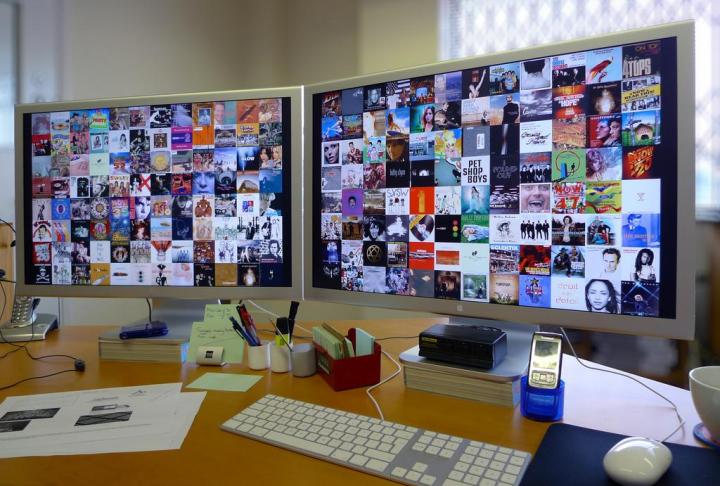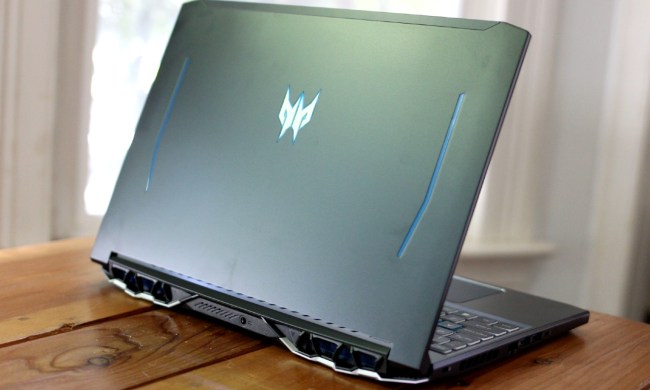
The wonderful days of CRT

To find the origins of the screensaver, we have to go all the way back to the Neolithic era of the 1990s, when dial-up Internet still prevailed and people were getting used to this whole gosh-darned email thing. Back in the days of the first at-home computers, all the desktop models were boxy, clunky models CRT monitors. CRT stands for Cathode Ray Tube, an older way of projecting images on a screen.
CRT monitors heated phosphorus via electron beams to produce light that was bent using magnetic deflection. While all that sounds awesome, it was actually a very old technique dating back to the first TVs, and it had trouble keeping up with the uses of modern computers.
You see, the phosphorus materials were not designed to be heated in the same colors for long periods of time. If you left a computer on for hours, then the dreaded “burn in” effect occurred. The burnt phosphors lost the ability to respond in different ways to the beams, and kept reproducing the same image over and over. This led to after-images and certain graphics, like menu bars, to stay on the screen constantly, essentially ruining the monitor.
Those old CRT monitors also used a lot of power and time to start up again after being turned off, so shutting the monitor down wasn’t the best idea, either. The solution was a simple program that kicked in after several minutes and ran some basic images across the screen to keep the phosphors from getting bored. Thus, the screensaver was born.
The rise of LCD

Because screensavers were so ubiquitous back in the 1990s and early 2000s, no one questioned their necessity. And since people are easily bored, screensavers quickly grew in complexity, color, and customization. It became a fun, harmless way to customize with your desktop.
By the time that flat-screened LCD monitors showed up in homes, the idea of a screensaver was so rooted in the consumer mind that no one ever considered ditching them. The irony is that LCD screens removed the need for screensavers almost entirely. LCD – Liquid Crystal Display – monitors used a completely different lighting technique that involved neither phosphorous nor electron beams, but suspended crystals activated by an electrical current.
While LCDs can suffer from some temporary image persistence (easily solved by turning the screen off for an extended period), they can’t be burnt. The screensaver has become superfluous, and almost no one noticed.
Screensavers and battery life – putting it to bed

Do you need a desktop screensaver? No. Is there something better? Yes – letting your desktop computer sleep or hibernate. If you change your settings for your computer to slip into a sleep mode after several minutes of inactivity, you are actually doing more good than using an old-fashioned screensaver.
Why, you ask? Today’s screens tend to use a lot of 3D-rendering and animation, which in turn use a bit of RAM and processing power – and push up your electrical bill. On a laptop this is even worse, because a screensaver will sap your battery while a sleep mode will save it.
Of course, if you still love your desktop screensaver (maybe it has a slideshow of your kids or a really funny cat), there’s a simple solution. Set your screen saver to only last for a few minutes before your computer slips into a mode where the screen is turned off for longer periods away from the desk.
Screensavers and security – locking it down

Screensavers have another important use in today’s world, where they can provide a time for locking your computer access. Note that this can work whether you switch to a screensaver or move directly into a sleep mode. The goal of a lock mode is to prevent others from stopping by the computer while you are away and accessing your files or data from your company. It requires a simple passcode to return to the desktop screen and start working again.
Implementing a simple lock mode on your computer is a vital step into today’s world of ID theft and eager data snatchers. In fact, compared with protecting your monitor’s lifespan, it’s a significant step up for the old screensaver function. So turn on that lock screen, protect your computer, and don’t worry too much about getting a screensaver.



